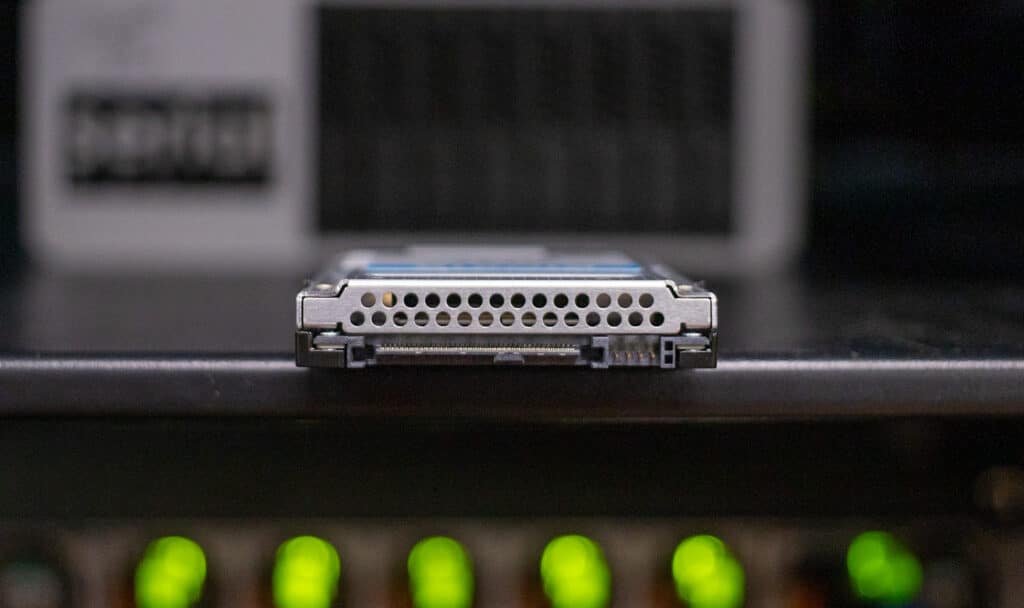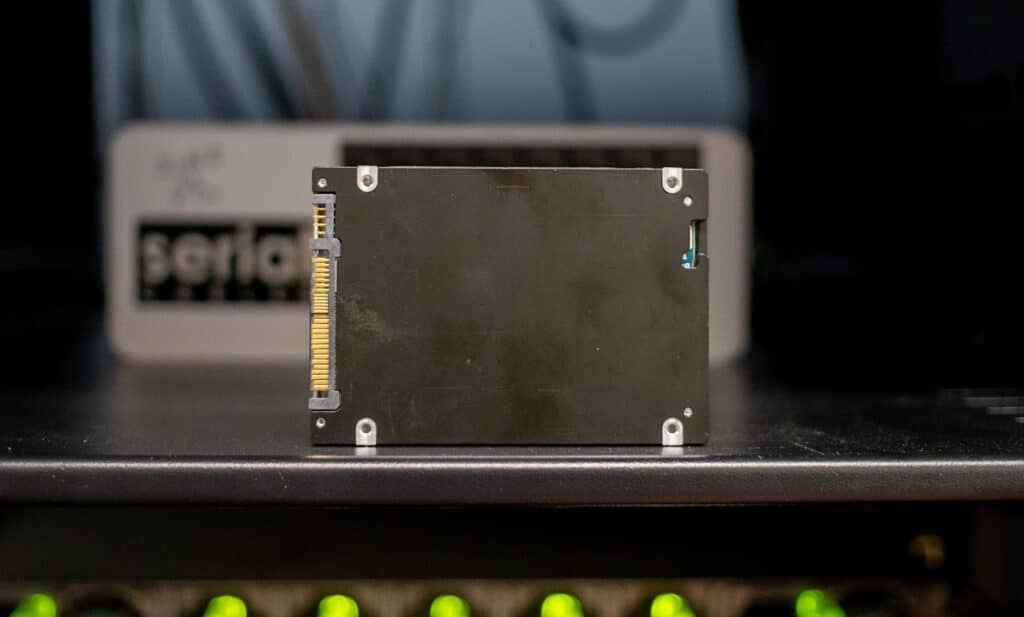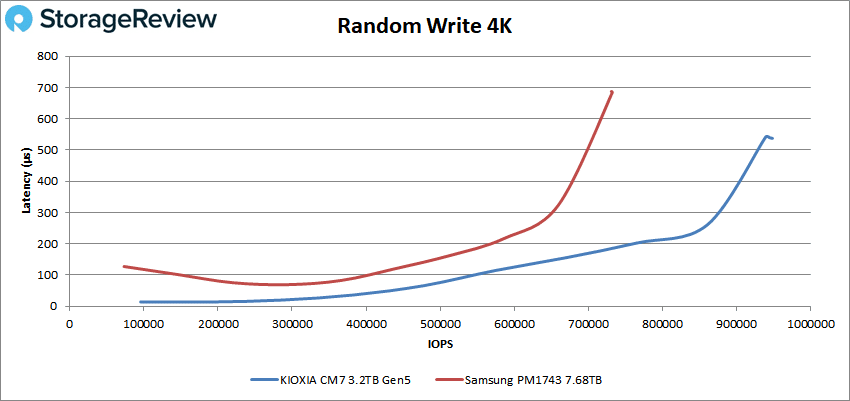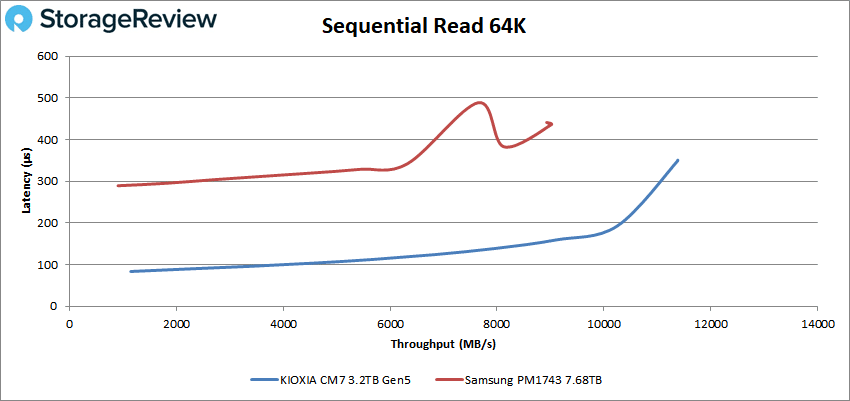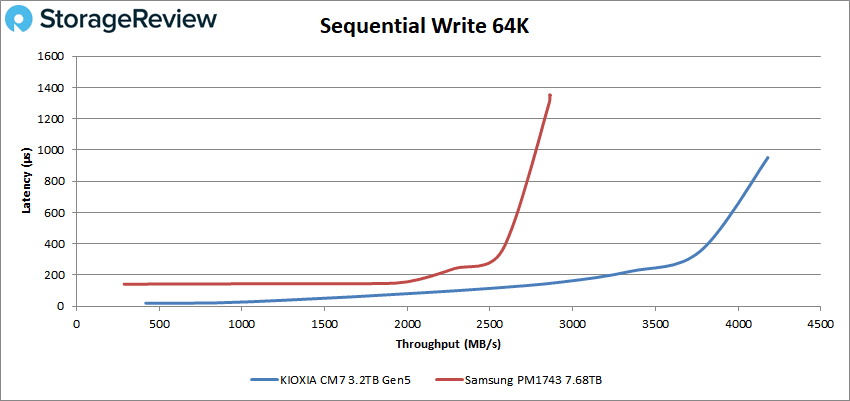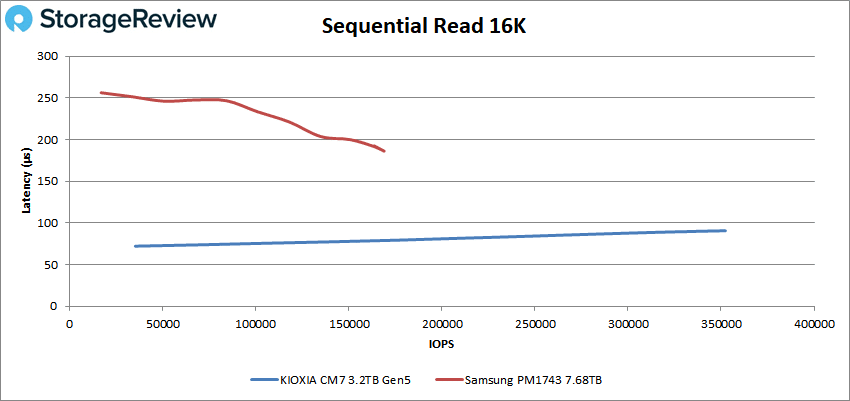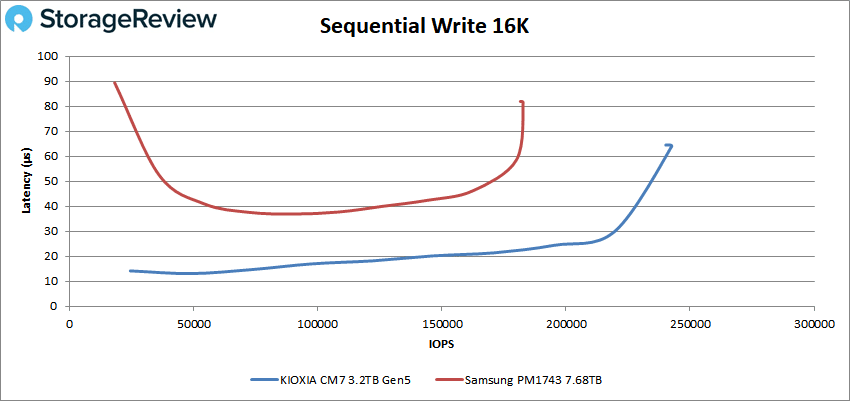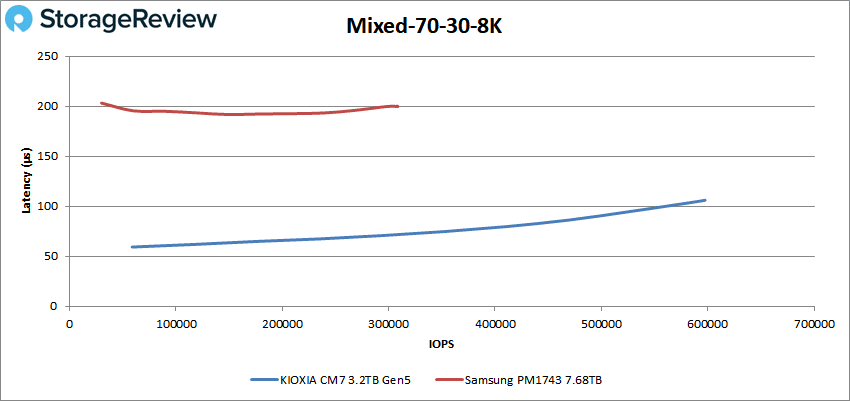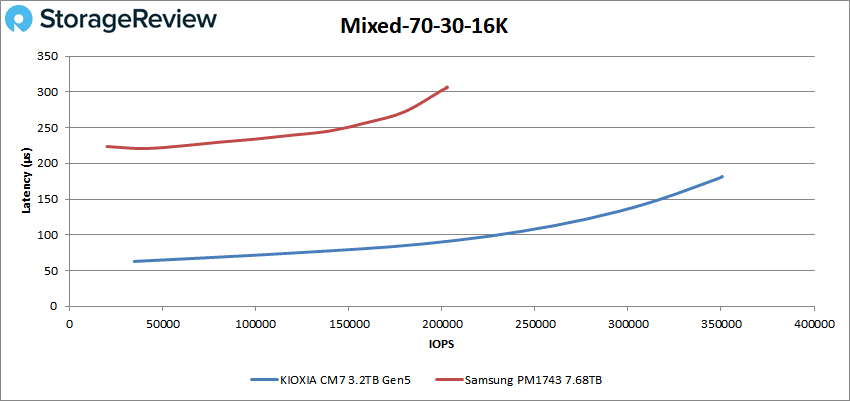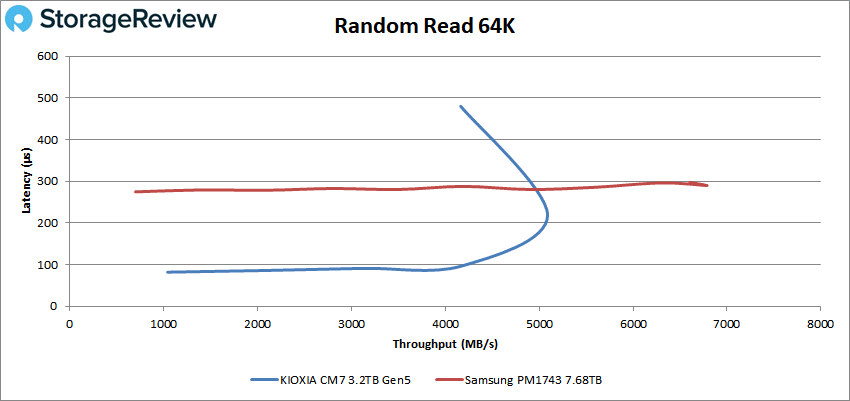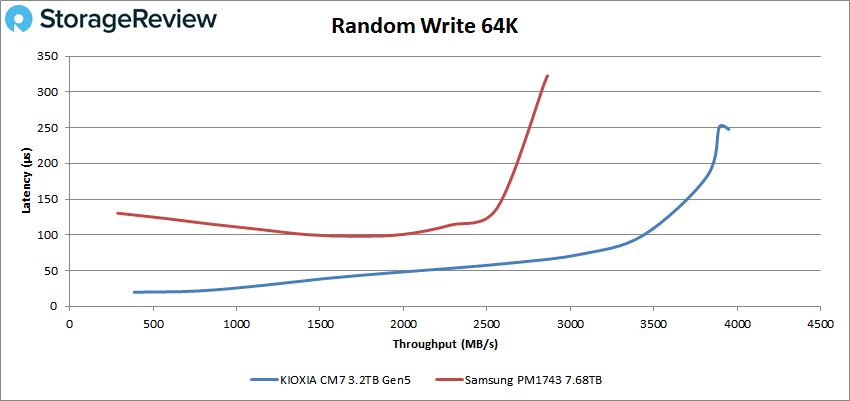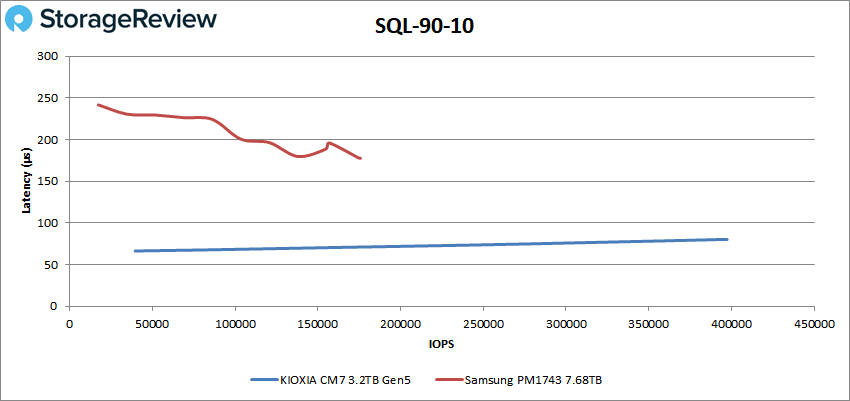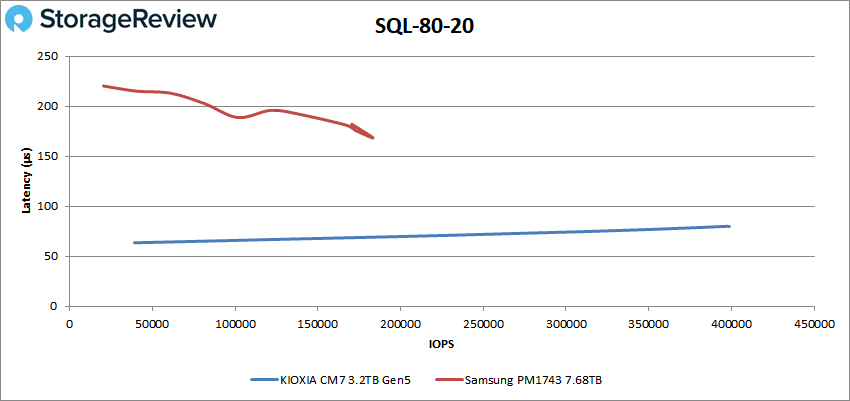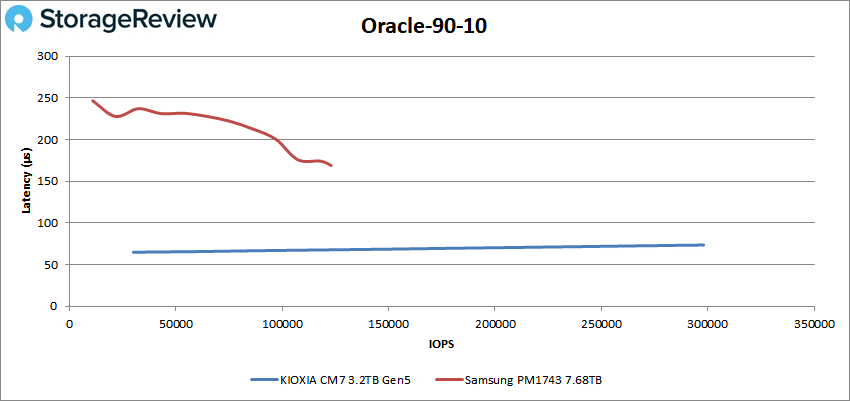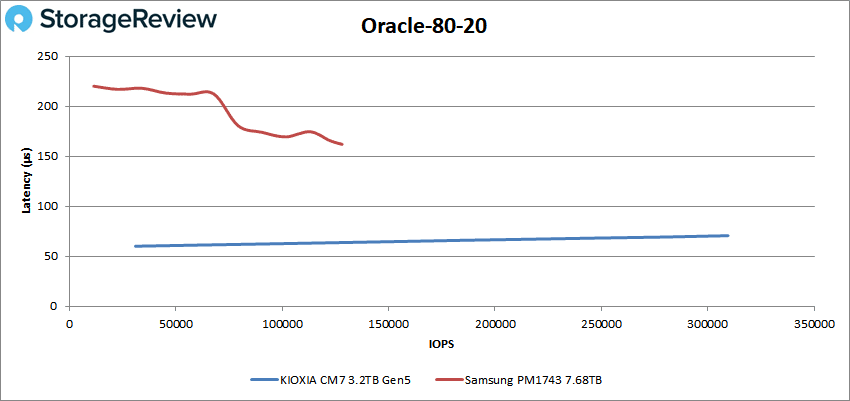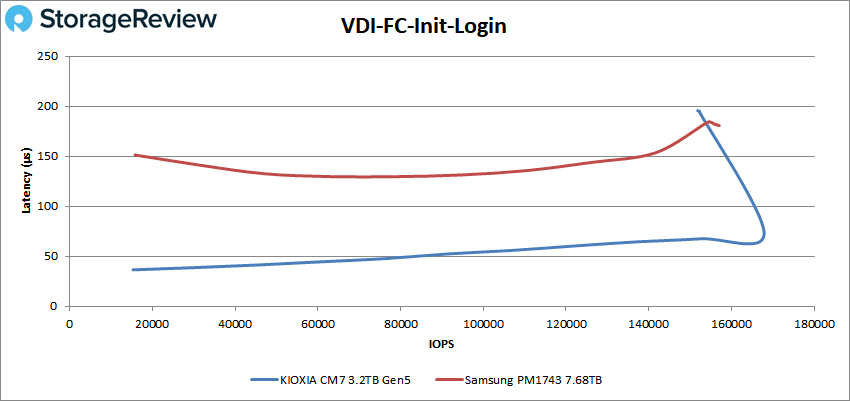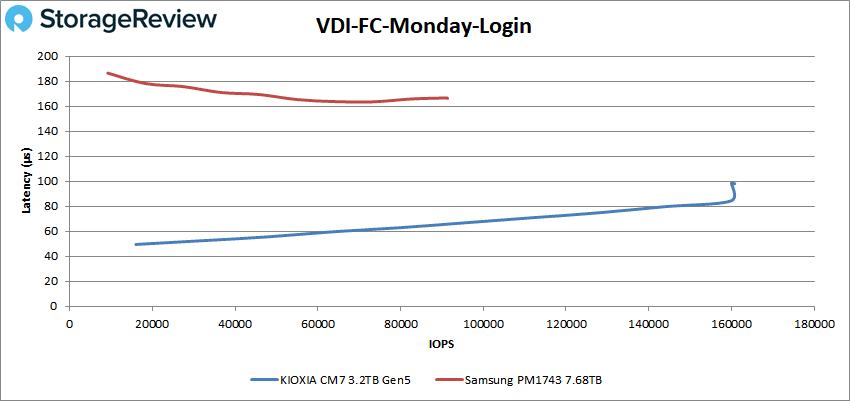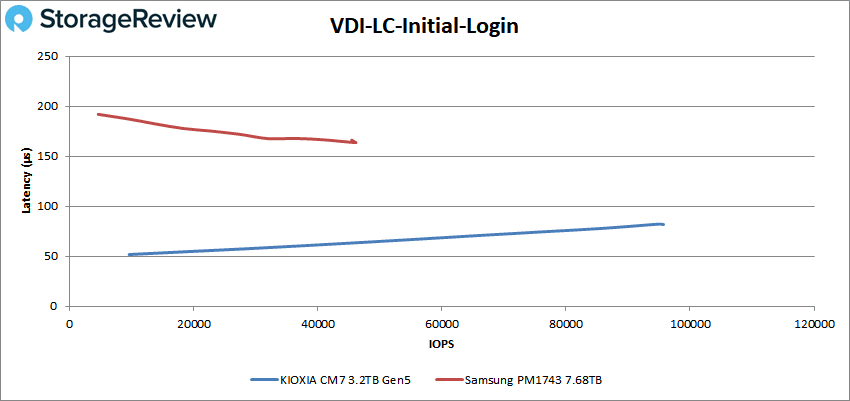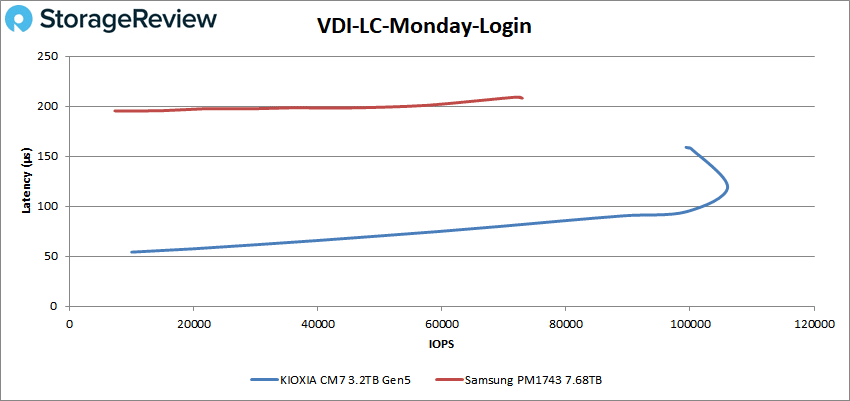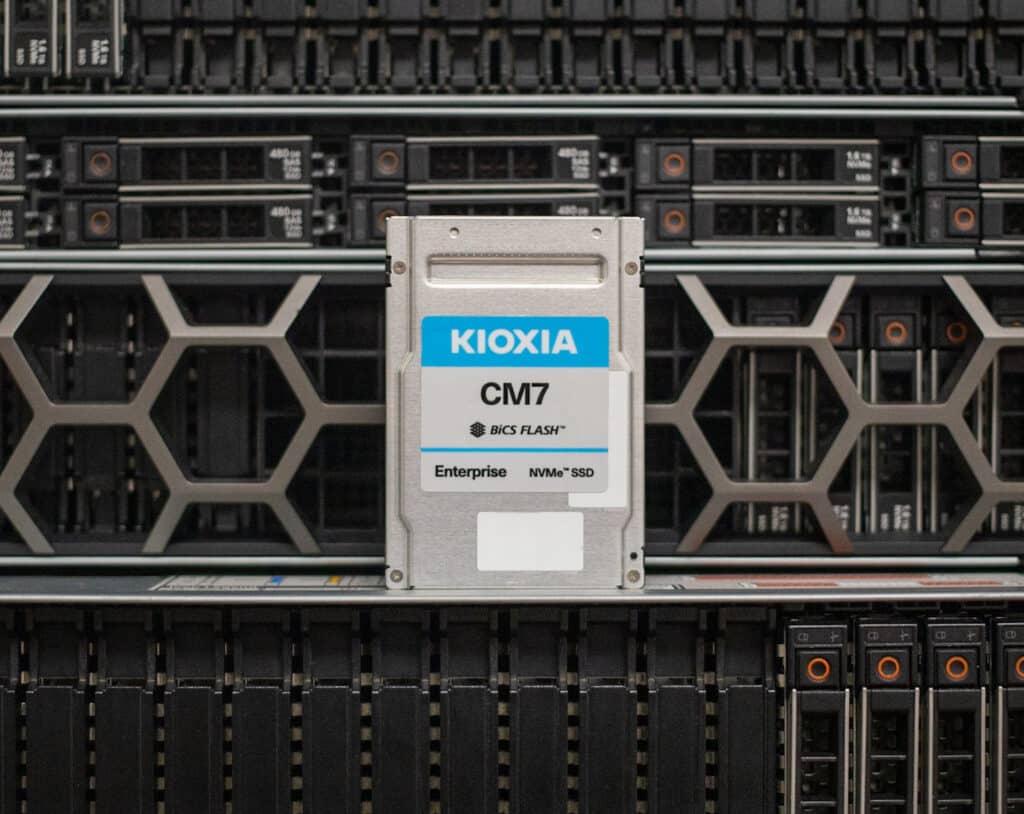The KIOXIA CM7 SSD is among the first Gen5 enterprise SSDs on the market, setting high standards for performance and innovation. IT departments across the industry are evaluating a variety of technologies like next-gen SSDs, scrutinizing their blend of cost-effectiveness and potential business impact. With top-line reads of 14,000MB/s and an impressive latency profile, KIOXIA is hopeful the CM7’s benefits for business-critical applications will be patently obvious.
The KIOXIA CM7 SSD is among the first Gen5 enterprise SSDs on the market, setting high standards for performance and innovation. IT departments across the industry are evaluating a variety of technologies like next-gen SSDs, scrutinizing their blend of cost-effectiveness and potential business impact. With top-line reads of 14,000MB/s and an impressive latency profile, KIOXIA is hopeful the CM7’s benefits for business-critical applications will be patently obvious.
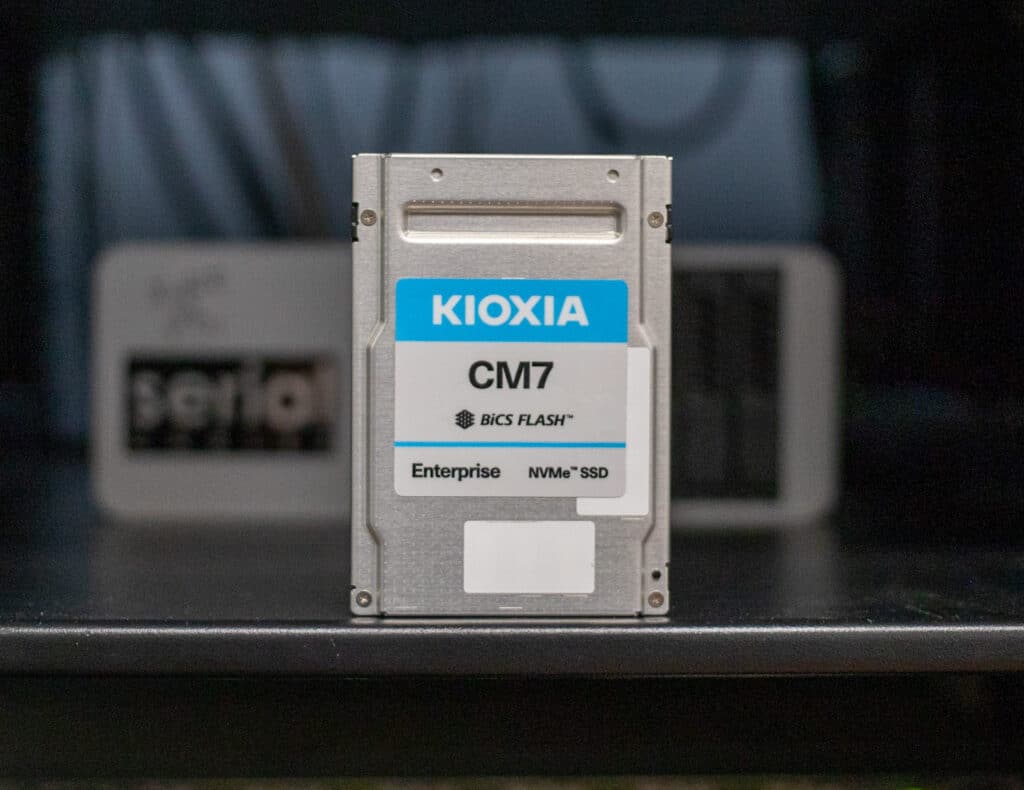
KIOXIA CM7 Features
KIOXIA indicates that the CM7 is meant for mixed-use, endurance-heavy use cases, such as AI/ML processing, transactional and relational databases, and business intelligence tasks. It offers a dual-port design that caters to high-availability applications, ensuring solid performance even in critical scenarios.
The CM7 also offers a range of data security options, including Self-Encrypting Drive (SED) capabilities, ensuring that sensitive information remains protected. Additionally, for even higher security standards, the drive is available with SED featuring FIPS 140-3 compliance, adding an extra layer of data security and regulatory adherence to its impressive feature set.
KIOXIA CM7 Build and Performance Profile
Delving into its components, the KIOXIA CM7 leverages its proprietary controller, firmware, and 112-layer BiCS FLASH 3D TLC technology. The SSD also aligns seamlessly with the NVMe 2.0 standard.
The CM7 family of SSDs is broken into two categories. The CM7-V, which we’re reviewing here, is a higher endurance drive (3 DWPD) designed for mixed workloads, topping out at 12.8TB. The read-intensive variant is apply called the CM7-R and supports a single DWPD endurance profile and a max capacity of 30.72TB. While we’re looking at the U.2 form factor for this review, the drives are also available in E3.S as well.
Looking at the CM7-V specs, during sustained 128 KiB metrics, the drive reaches a peak of 14,000MB/s for sequential reads and 7,000MB/s for sequential writes. Sustained 4KB random reads and writes attain up to 2,700K and 310k IOPS, respectively. It also features a mean time between failure (MTBF) rating of 2,500,000 hours. The detailed specification table below serves as an excellent reference for a comprehensive look at drive performance. All of the drives are backed by a 5-year warranty.
Our review is on the 3.2TB CM7-V SSD variant.
KIOXIA CM7 Specifications
| Model Number | KCMYFVUG12T8 | KCMYFVUG6T40 | KCMYFVUG3T20 | KCMYFVUG1T60 |
| Capacity | 12,800 GB | 6,400 GB | 3,200 GB | 1,600 GB |
| Basic Specifications | ||||
| Form Factor | 2.5-inch, 15mm thickness | |||
| Interface | PCIe 5.0, NVMe 2.0 | |||
| Maximum Interface Speed | 128 GT/s (PCIe Gen5 single x4, dual x2) | |||
| Flash Memory Type | BiCS FLASH TLC | |||
| Performance in single port (1×4) mode (Up to) | ||||
| Sustained 128 KiB Sequential Read | 14,000MB/s | |||
| Sustained 128 KiB Sequential Write | 7,000MB/s | 6,750MB/s | 3,500MB/s | |
| Sustained 4 KiB Random Read | 2,400K IOPS | 2,450K IOPS | 2,700K IOPS | 2,000K IOPS |
| Sustained 4 KiB Random Write | 550K IOPS | 600K IOPS | 310K IOPS | |
| Power Requirements | ||||
| Supply Voltage | 12 V ± 10 %, 3.3 V ± 15 % | |||
| Power Consumption (Active) | 25 W typ. | 22 W typ. | ||
| Power Consumption (Ready) | 5 W typ. | |||
| Reliability | ||||
| MTTF | 2,500,000 hours | |||
| Warranty | 5 years | |||
| DWPD | 3 | |||
| Dimensions | ||||
| Thickness | 15.0 mm +0 / -0.5 mm | |||
| Width | 69.85 mm ± 0.25 mm | |||
| Length | 100.45 mm Max | |||
| Weight | 130 g Max | |||
| Environmental | ||||
| Temperature (Operating) | 0 °C to 73 °C | 0 °C to 76 °C | ||
| Temperature (Non-operating) | -40 °C to 85 °C | |||
| Humidity (Operating) | 5 % to 95 % R.H. | |||
| Vibration (Operating) | 21.27 m/s2 { 2.17 Grms } ( 5 to 800 Hz ) | |||
| Shock (Operating) | 9.8 km/s2 { 1,000 G } ( 0.5 ms ) | |||
KIOXIA CM7 Performance
Testbed
To test the KIOXIA CM7 Gen5 SSD, we leverage the Dell PowerEdge R760 in our test lab. It is a highly versatile 2U rackmount server that supports two 4th generation Intel Xeon processors and has configurations that support up to 24 NVMe drives. This server is intended for mixed workloads, databases, and VDI.
Dell PowerEdge R760 Configuration
- Dual Intel Xeon Gold 6430 (32 cores/64 threads, 1.9GHz base)
- 1TB DDR5 RAM
- Ubuntu 22.04
For ultimate flexibility, we also worked with Serial Cables, who supplied us with an 8-bay PCIe Gen5 JBOF for U.2/U.3, M.2, and EDSFF SSD testing. This allows us to test all current and emerging drive types on the same test hardware.
With the KIOXIA CM7 being the first Gen5 enterprise SSD tested on this new platform, we put it against the Samsung PM1743 Gen5 SSD we tested inside the Dell PowerEdge R660 earlier this year. It is worth noting the PM1743 has a 1 DWPD endurance rating vs. the 3 DWPD in the CM7-V.
VDBench Workload Analysis
When benchmarking storage devices, application testing is best, and synthetic testing is second. While not a perfect representation of actual workloads, synthetic tests help baseline storage devices with a repeatability factor that makes it easy to compare apples-to-apples between competing solutions. These workloads offer a range of testing profiles ranging from “four corners” tests and common database transfer size tests to trace captures from different VDI environments.
These tests leverage the common vdBench workload generator, with a scripting engine to automate and capture results over a large compute testing cluster. This allows us to repeat the same workloads across various storage devices, including flash arrays and individual storage devices. Our testing process for these benchmarks fills the entire drive surface with data and then partitions a drive section equal to 25% of the drive capacity to simulate how the drive might respond to application workloads. This differs from full entropy tests, which use 100 percent of the drive and take them into a steady state. As a result, these figures will reflect higher-sustained write speeds.
Profiles:
- 4K Random Read: 100% Read, 128 threads, 0-120% iorate
- 4K Random Write: 100% Write, 128 threads, 0-120% iorate
- 64K Random Read: 100% Read, 128 threads, 0-120% iorate
- 64K Random Write: 100% Write, 128 threads, 0-120% iorate
- 16K Sequential Read: 100% Read, 32 threads, 0-120% iorate
- 16K Sequential Write: 100% Write, 16 threads, 0-120% iorate
- 64K Sequential Read: 100% Read, 32 threads, 0-120% iorate
- 64K Sequential Write: 100% Write, 16 threads, 0-120% iorate
- 4K, 8K, and 16K 70R/30W Random Mix, 64 threads, 0-120% iorate
- Synthetic Database: SQL and Oracle
- VDI Full Clone and Linked Clone Traces
In our first VDBench Workload Analysis, random 4K read, the KIOXIA CM7 performance peaked at 2.7 million IOPS with a latency of 188.6µs.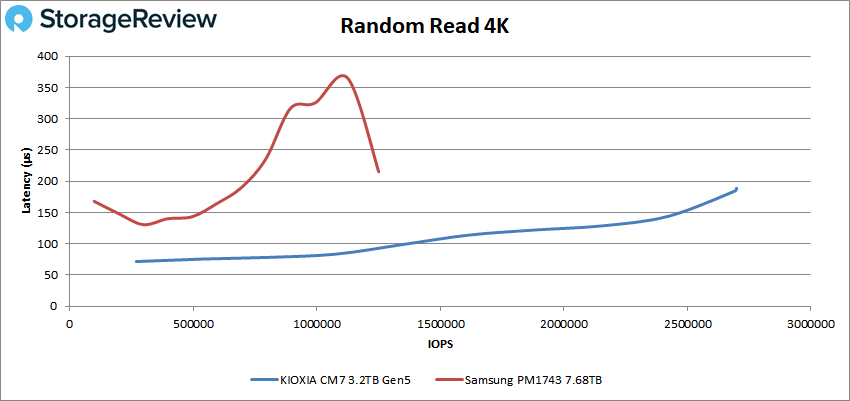
Switching over to 64k sequential workloads, the KIOXIA CM7 peaked at 11.4GB/s (182K IOPS) with a latency of 349.5µs in read activity.
In sequential writes, the KIOXIA CM7 posted 4.18GB/s write (67K IOPS) at 951.7µs in latency.
Next up are the 16K tests. In sequential reads, the KIOXIA CM7 showed an impressive 352K IOPS (5.5GB/s) at 90.7µs.
In sequential write 16K, the CM7 reached 242K IOPS (3.79GB/s) at just 63.9µs.
Now for our mixed read/write profiles, starting with 70/30 4K. Here, the CM7 KIOXIA drive hit 881K IOPS at 71.6µs.
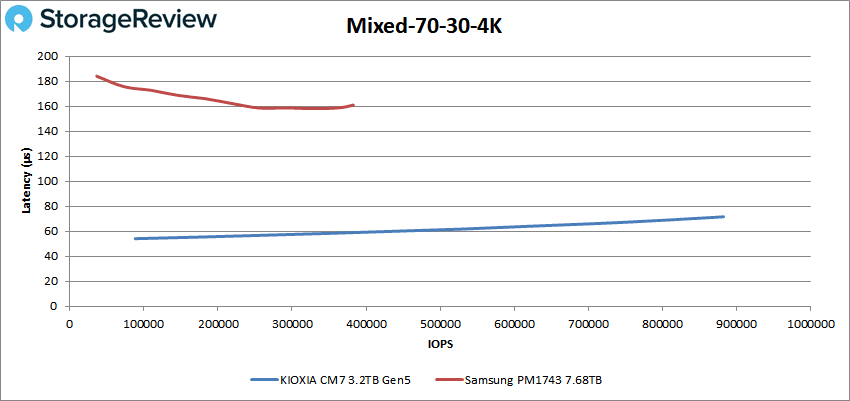
In the 70/30 16K profile, the impressive performance of the KIOXIA CM7s continued, completing the test at 597K IOPS at 106.1µs.
The following two tests are 64k random benchmarks. In reads, the KIOXIA drive hit 81K IOPS at 219.2µs before taking a pretty steep spike in performance at the end of the test.
In 64k random writes, the CM7 peaked at 63K IOPS with a latency of 247.6µs.
Our next set of tests is our SQL workloads: SQL, SQL 90-10, and SQL 80-20. Like most of the previous benchmarking above, the CM7 continued to show a noticeable performance difference. Starting with the standard SQL workload, the KIOXIA CM7 posted a peak performance of 382K IOPS with a latency of 83.5µs.
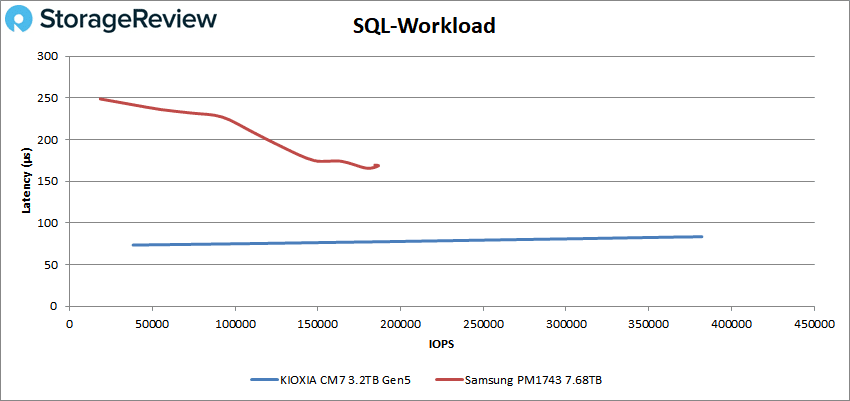
With SQL 80-20, the KIOXIA CM7 continued its excellent performance, peaking at 399K IOPS with a latency of 79.8µs.
Next are the Oracle workloads (Oracle, Oracle 90-10, and Oracle 80-20. Starting with the general Oracle workload, the new KIOXIA drive had a peak performance of 416K IOPS at 85.1µs.
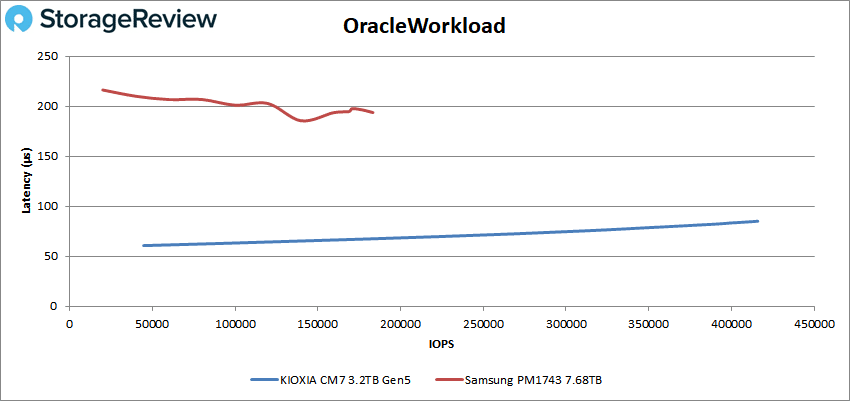
Next is Oracle 80-20, where the CM7 peaked at 310K IOPS with a steady latency of 70.6µs.
Next, we switched to our VDI clone test, Full and Linked. VDI Full Clone (FC) Boot peaked at 335K IOPS with a latency of 103µs (though it had a minor blip in performance at the end).
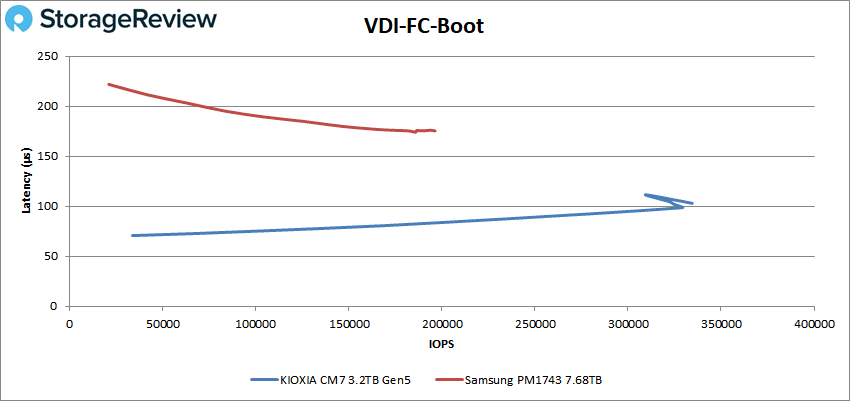
With VDI FC Monday Login, the KIOXIA CM7 posted impressive steady performance, peaking at 161K IOPS at a latency of 98.1µs.
For the VDI Linked Clone (LC) Boot, the CM7 ended the test at a very steady 166K IOPS with 96.3µs.
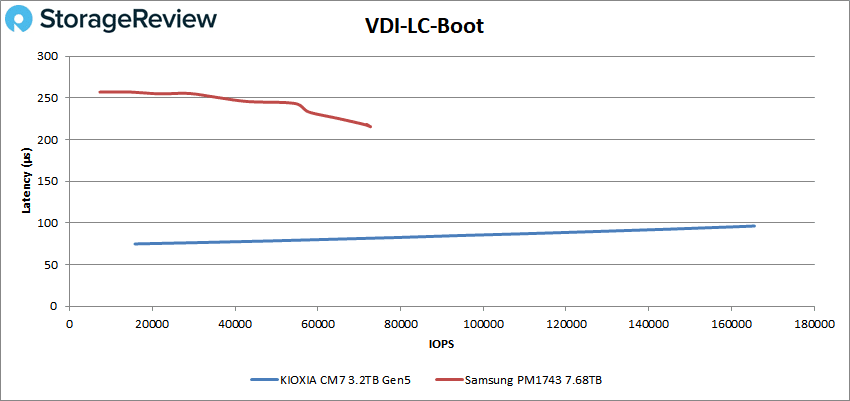
For VDI LC Monday Login, the CM7 peaked at 106K IOPS with a latency of 119µs (though showing a spike in performance at the very end).
Conclusion
The KIOXIA CM7 SSD presents a significant step forward in the enterprise storage landscape as one of the first enterprise-grade Gen5 SSDs to hit the market. With a focus on mixed-use, endurance-heavy scenarios, such as AI/ML processing, transactional databases, and business intelligence tasks, the CM7 excels in various enterprise applications. This was certainly evident in our benchmarking against the only other Gen5 comp in our lab so far, the Samsung PM1743.
Its dual-port design also ensures high availability, contributing to its reliability in critical scenarios. The robust data security options, including Self-Encrypting Drive capabilities and FIPS 140-3 compliance, further elevate its appeal to security-conscious enterprises. The KIOXIA CM7 SSD also comes in various capacities, including the sizable 30.72TB model, catering to a range of storage needs. Backed by a 5-year warranty, it also offers a sense of confidence in its reliability over time.
In addition, the CM7’s robustness extends to its components, leveraging proprietary controller, firmware, and cutting-edge BiCS FLASH 3D TLC technology. Despite variations in performance based on drive capacity, the KIOXIA drive’s metrics remain impressive across the board during our tests. Overall, the drive’s focus on mixed workloads, databases, and VDI is evident through these results, allowing it to easily and efficiently handle diverse workloads.
As enterprises continue to demand higher performance and reliability from their storage solutions, the KIOXIA CM7-V emerges as a formidable option that can effectively support AI-driven workloads and other demanding applications. Its impressive benchmarking results and comprehensive feature set make it a compelling choice for businesses seeking cutting-edge and future-proof enterprise storage solutions in their Gen5-supported systems.
Engage with StorageReview
Newsletter | YouTube | Podcast iTunes/Spotify | Instagram | Twitter | TikTok | RSS Feed

